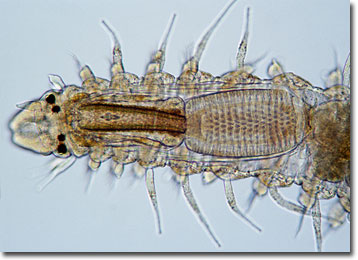Wim van Egmond
Polychaete Head
Related to the common earthworm, polychaetes are a class of annelids that live in marine environments. More than 5,000 living species have been identified, including the commonly known bloodworms and lugworms.

Polychaetes exist in both free-living and tube-dwelling forms, and may vary in size from only a few millimeters long to lengths as great as 10 feet. The segmented worms bear pairs of fleshy appendages called parapodia on most of their segments and the outgrowths are generally equipped with numerous setae, or bristles. Most of the organisms, which often exhibit bright colors, are also outfitted with palps and tentacles on their heads. However, the heads of some sedentary polychaetes may be indistinct, and those tube-dwelling varieties with distinct heads often lack head appendages.
Polychaetes utilize their various appendages for sensing their environments, locomotion, and to aid in food capture. Feeding habits, however, vary widely, and some of the worms may possess large, fluffy crowns of tentacles that ensnare plankton, while others feed on larger organisms through the use of strong jaws and a pharynx. As part of the food web, polychaetes are also a source of food for other animals. Many shorebirds, for instance, are heavily dependent on sedentary varieties as a source of nutrition, and even humans enjoy the consumption of certain species. The tails of paolo worms, which are members of the families Eunicidae and Nereidae, are particularly popular in the South Pacific, where they gather in abundance during breeding season.
BACK TO WIM VAN EGMOND GALLERY
